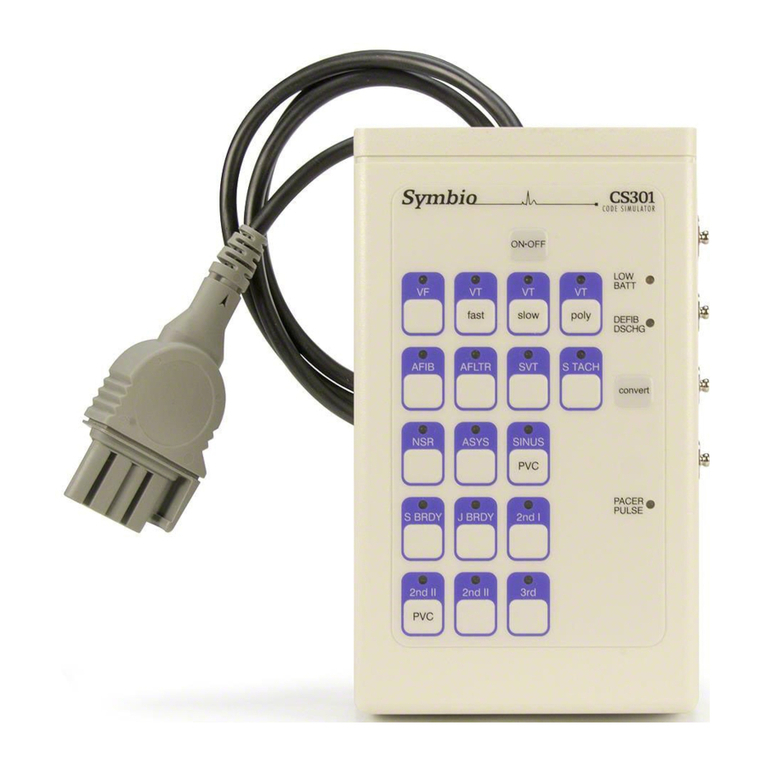
Baery Saver Feature
The CS1201 powers-off automacally 30 minutes aer a key was last pressed,
or aer defib or pacer energy was last detected. This is normal baery saver
operaon. To enable the simulator to remain powered-on aer 30 minutes of
inacvity, follow these instrucons:
1. With the simulator powered-off, press and hold down convert key, then
press and release ON OFF key.
2. Watch the NSR indicator. When it flashes rapidly, release the convert key.
IBP (an oponal feature)
If your CS1201 has the oponal IBP feature, you will need to zero your IBP
monitor before displaying IBP waveforms.
1. Start with your IBP monitor powered-off and then connect its IBP cable
to the CS1201's IBP cable.
2. Power-on the CS1201 and select ASYS.
3. Then, power-on your monitor and follow its instrucons for zeroing.
Exercise: Pace 3rd degree AV block at rate of 70 ppm.
Connect simulator to external pacer.
To simulate paced beats, pacer Rate must be greater than rate of selected
rhythm, and pacer Output must be greater than simulator capture level.
at simulator:
1. Press 3rd key. Confirm 3rd degree AV block is displayed on monitor.
2. Press capture key once to select capture level II
(75 to 80mA capture level).
at pacer:
3. Select Pacer On. Verify sense markers are displayed with each R wave.
(If not, press ECG Size buon unl R wave markers are observed.)
4. Select rate of 70 ppm using Rate control.
5. Press Start/Stop buon to start pacing.
6. Using Output control, increase pacer current unl paced beats are
displayed. Pacer current seng will be 75 to 80 mA.
External Pacer Exercise
3rd degree AV block paced beats at 70ppm
Symbio Corporaon
1600 NE Compton Drive
Suite 120
Hillsboro, Oregon 97006
www.symbiocorp.com
503-748-2030
Warranty and Service
The CS1201 ECG Simulator is warraned to be free of defects in material or
workmanship for three years from date of purchase. If your simulator needs
service, or if you have quesons about its operaon, please contact Symbio
Corporaon.
NOTE: Damaged caused by baery acid corrosion is not covered by the
warranty. Removing the baeries between uses is recommended.
Maintenance and Calibraon
Based on the product’s design, and based on experience with units in the field,
Symbio does not recommend regular calibraon of our Simulators. From a
design standpoint, the me base used to generate ECG waveforms and to
measure the duraon of defib and pacer pulses is crystal-controlled;therefore,
ECG waveform rates and defib/pacer measurement criteria remain constant
over me.
WARNING: Shock Hazard Exists
When discharging the defibrillator, keep hands and all objects clear of the
simulator. Be sure the simulator cable or ECG cable is securely plugged into the
defibrillator. Be sure that the simulator housing is intact, and that the cable is
free of nicks, cracks and cuts. Do not discharge the defibrillator into the
simulator more than three mes within one minute. Never discharge more than
360 joules into the simulator. Do not immerse or set the simulator in liquid.
Using the devise in standing water can present a shock hazard to the operator
and anyone nearby.
3























